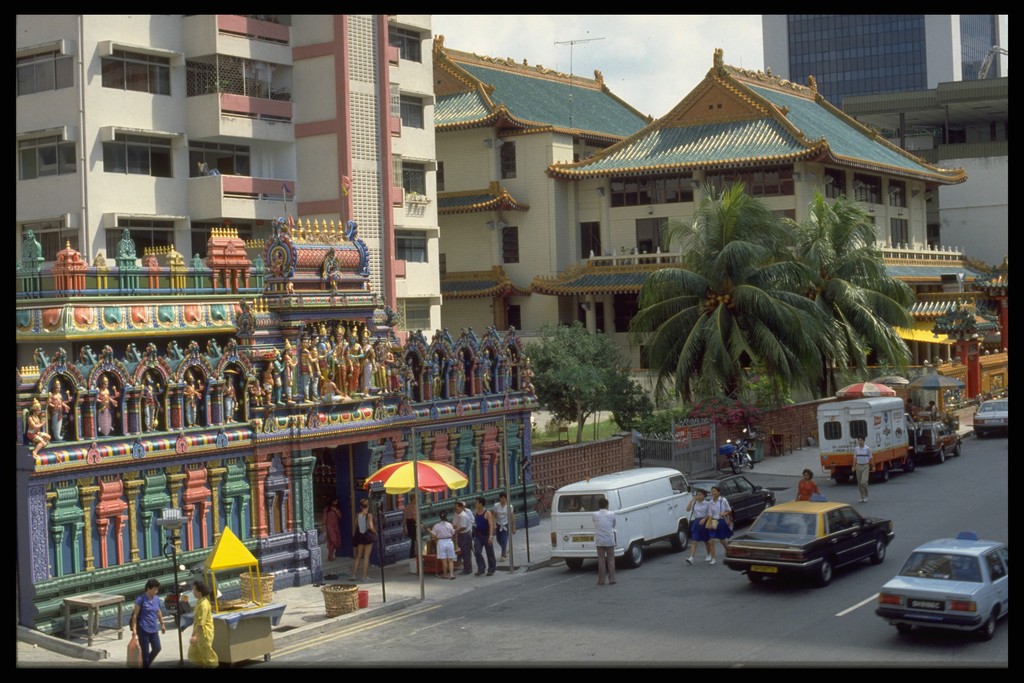Dragon Boat Festival
Early Chinese immigrants brought Dragon Boat Festival (Duan Wu Festival) celebrations from their hometowns to Singapore. It is now one of the four major Chinese festivals celebrated on the island, along with Chinese New Year, Qing Ming Festival, and the Mid-Autumn Festival. As times changed, the customs of the Dragon Boat Festival were simplified. The practices of wearing fragrant sachets as well as hanging mugwort leaves and calamus on the door to ward off evil spirits and disasters are rarely seen today. The tradition of eating dumplings and racing dragon boats, however, remains.
The legend behind the festival
The origins of the Dragon Boat Festival date back to the Warring States Period in China more than 2,000 years ago. Qu Yuan, a poet and patriot, wrote in The Songs of Chu:
Sorrow and lamentation in my heart, I journey alone to the southern land
So vast and endless, the wilderness is quiet and remote
Deep and dense are the woods, boundless and endless is the journey
Contemplating my thoughts, I make my will
Suppressing my grievances and restraining my pain
A Cantonese saying goes, “The dragon is in the field during the market period, and on the third and fourth days of the lunar month, the dragon leaps into the abyss.”
Dragon boat races are carried out on the third and fourth days of the fifth lunar month. After the races, the villagers bury the body of the dragon boat in the river, while the dragon’s head and tail are placed in the ancestral hall.
In the regions of Fuzhou and Quanzhou, there is also a tradition of dragon boat racing that dates back about 600 years. In Fuzhou, it is often said: “Since ancient times, dragon boat races have been held during the day, but only in Sanxi do they race at night.” Dragon boat races in Sanxi Village are held at night so that the farmers, who work during the day, can participate in this grand event at night.1
Many flavours of local dumplings
Eating rice dumplings as a family during the Dragon Boat Festival holds significant cultural and historical meaning. Rice dumplings in Singapore come in a variety of flavours, such as traditional Hokkien-style meat dumplings, Guangdong-style savoury meat dumplings, green bean dumplings, and alkaline rice dumplings, all wrapped in bamboo leaves.2
When Singaporeans eat alkaline rice dumplings, they like to dip them in a little sugar or a local coconut jam called kaya to enhance the taste.
Nonya rice dumplings, a local specialty, are sweet and fragrant. The filling is mainly made up of pork, five-spice powder, and candied winter melon. Wrapped in pandan leaves and steamed, they are infused with the aroma of plants.
Traditional rice dumplings are triangular in shape, like a pyramid. The base of Guangdong-style dumplings, on the other hand, are quadripartite-shaped. Some Guangdong-style dumplings are wrapped in lotus leaves, steamed, and elongated in shape, but these have nothing to do with commemorating Qu Yuan.
Some Singaporean Hakka people preserve the tradition of ancestor worship and eating ai ban, a traditional kueh or cake made with mugwort and glutinous rice, during the Dragon Boat Festival. Ai ban is easy to make. Glutinous rice and mugwort are steamed together and can be flavoured with various ingredients according to personal taste. From the perspective of traditional Chinese medicine, mugwort is believed to have cooling and detoxifying properties, so ai ban also aims to enhance health and prevent illness.

Festival activities
Chinese associations in Singapore have been holding Dragon Boat Festival activities for many years. Various clan associations host events such as dragon boat carnivals, rice dumpling tasting gatherings, dumpling wrapping competitions and story-telling events every year. These events provide different avenues for people to learn about the festival.
Singapore held its first dragon boat race in 1978. Since then, dragon boat racing has evolved into an annual event in the country. Participants are typically organised into teams of 12 or 22 members, which include 10 paddlers, one steersman, and one coach, or 20 paddlers, one steersman, and one drummer. Bedok Reservoir, Marina Bay, the Singapore River, and East Coast Park are among the venues that have hosted dragon boat races.
Dragon boat racing has evolved into a water sport that attracts both men and women from various ethnic groups. Students and young people are often seen practising dragon boat racing in places such as Bedok Reservoir, Kallang River, Jurong Lake, and Punggol Reservoir. Through dragon boat racing, participants not only train their physical fitness, but also build their willpower and teamwork.


This is an edited and translated version of 端午节. Click here to read original piece.
| 1 | Lee Kok Leong, Dayanji, yueyangren [Breaking the Waves] (Singapore: Traveler Palm Creations, 2017), 230–232. |
| 2 | Kaya is a popular spread in Southeast Asia. It is made by blending ingredients such as coconut milk, eggs, and sugar and then steaming them. Kaya is typically spread on bread. For more information, refer to the Singapore Mandarin Database’s “Kaya”. |
Committee on Chinese customs and rites, ed. Huaren lisu jieri shouce [Chinese customs and festivals in Singapore]. Singapore: Singapore Federation of Chinese Clan Associations, 1989. | |
“Longzhousai jiang dali fazhan guangda chuantong xiyin youke” [Dragon boat racing to promote traditions and attract tourists]. Lianhe Zaobao, 8 March 1988. |










